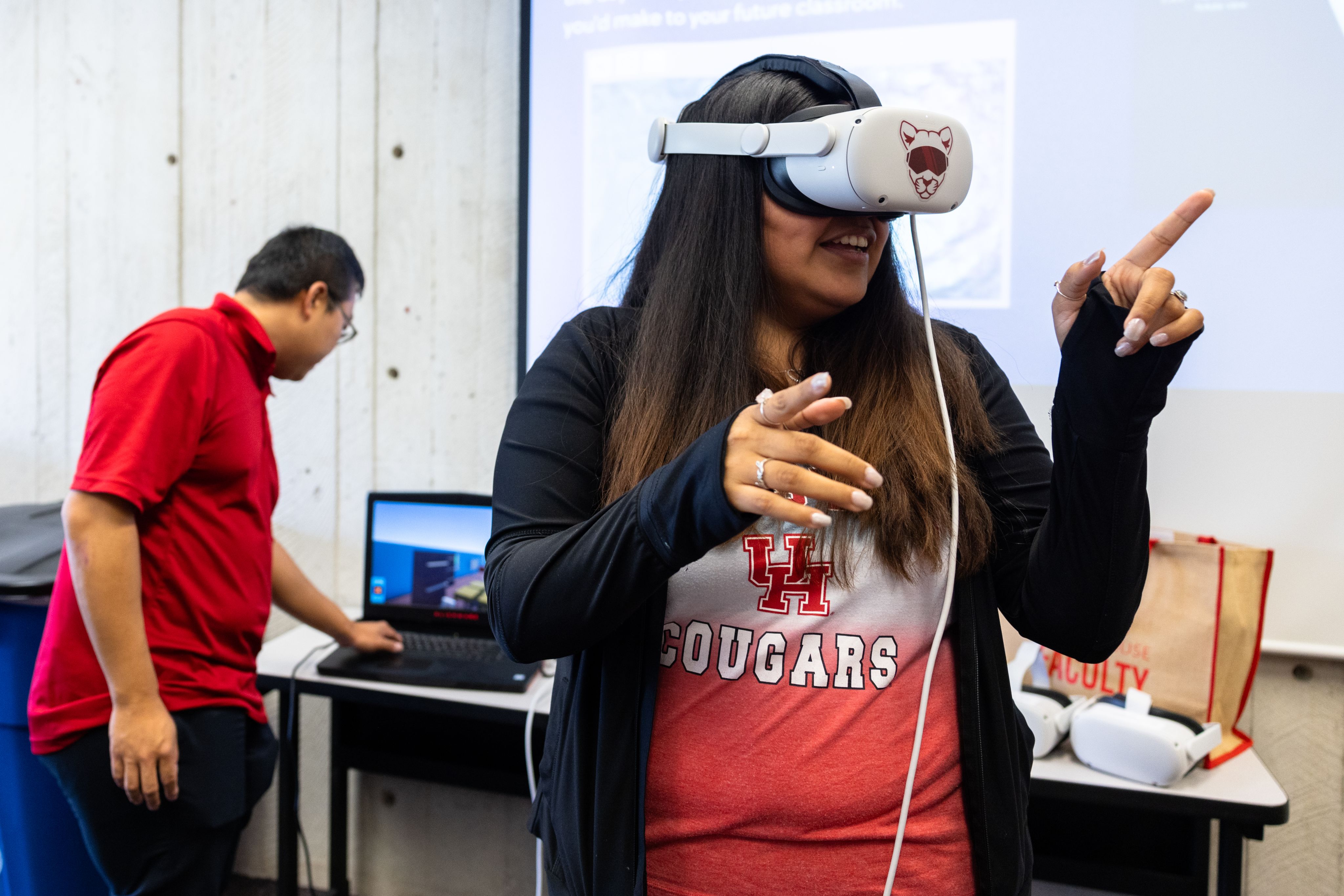Envisioning the Classroom of the Future at the University of Houston
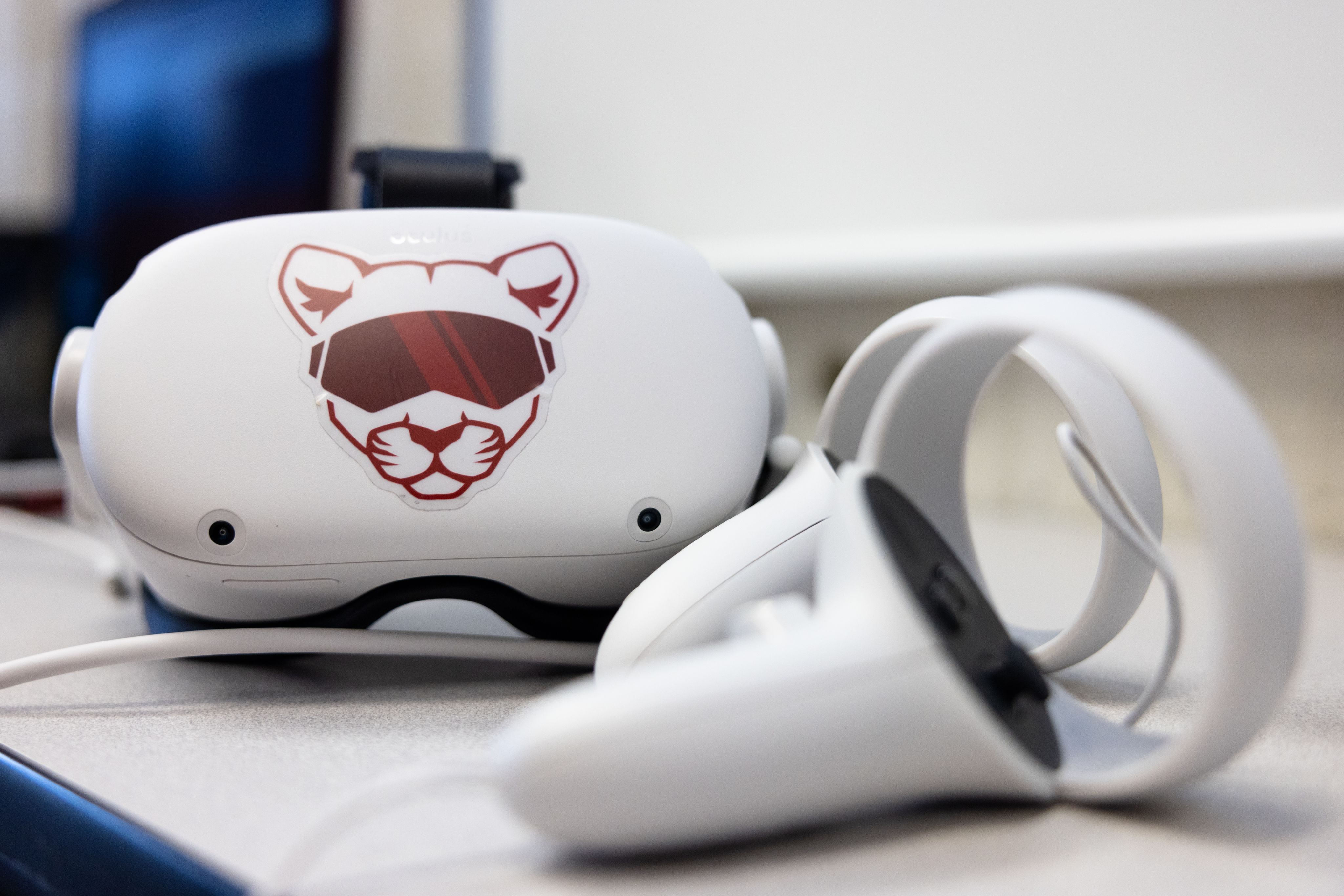
Aspiring educators at the University of Houston are getting a sneak peek at the future of classroom instruction. Thanks to augmented reality (AR) and virtual reality (VR) technology, these future teachers are visualizing their classrooms before they step foot on a school’s campus.
Credit UH’s Faculty Engagement and Development (the FED) for this high-tech learning opportunity. This semester, students in the course Educational Technology for Elementary Teachers - Curriculum and Instruction (CUIN) 3111 are using AR and VR technologies to help them visualize their future classrooms.
Such efforts are part of the FED’s Envisioning Classroom of the Future initiative, which explores new and innovative ways of harnessing contemporary technology for instruction.
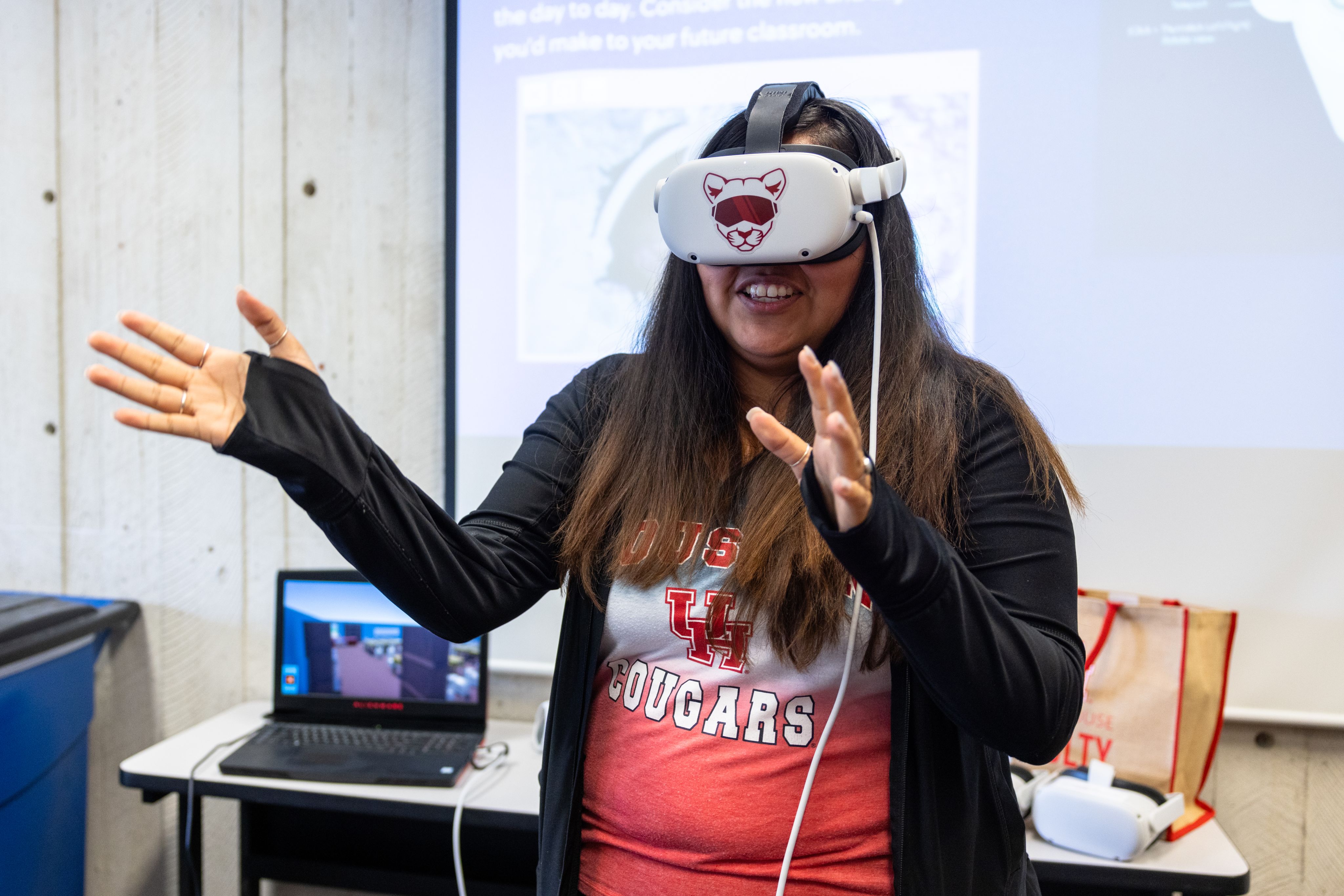
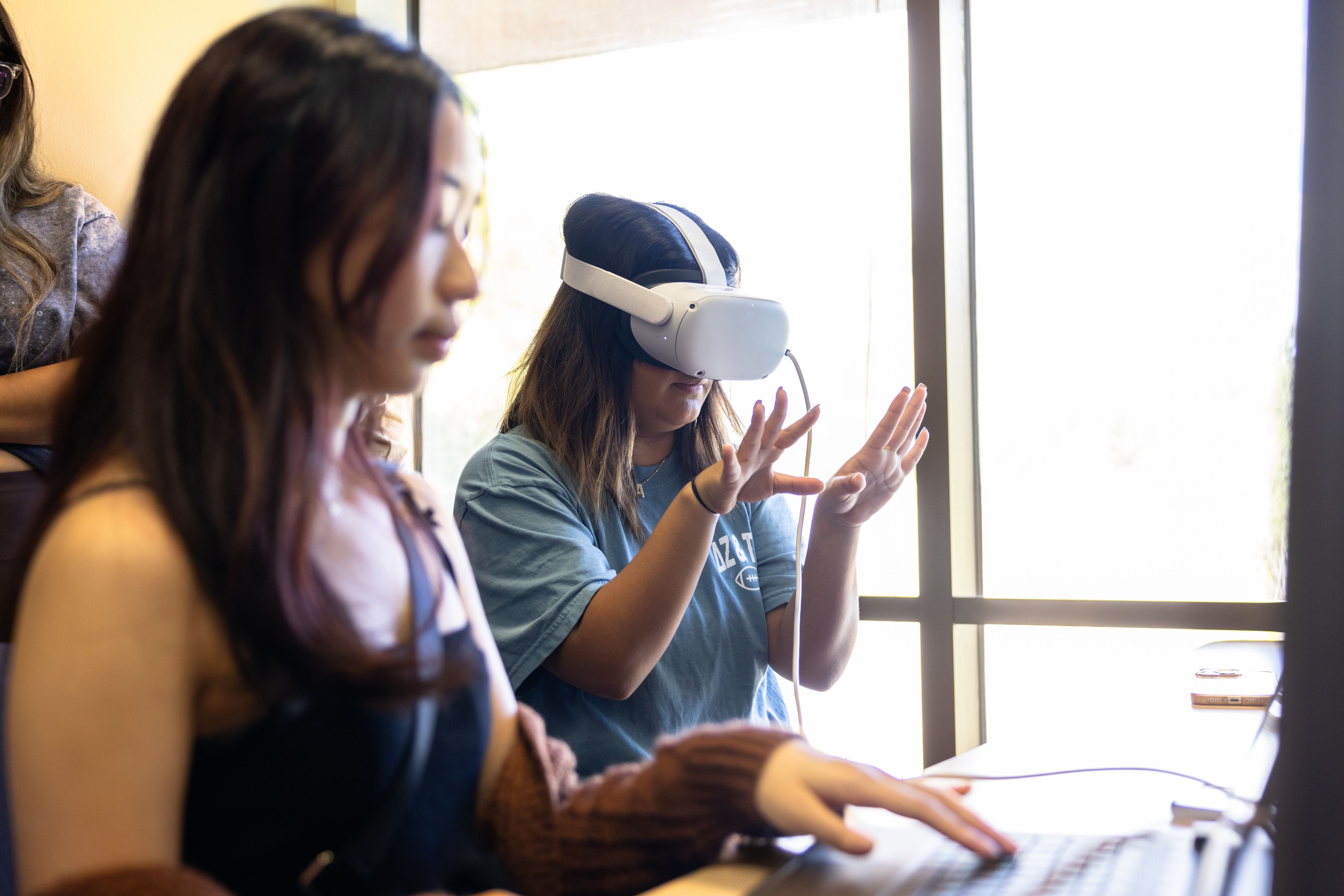
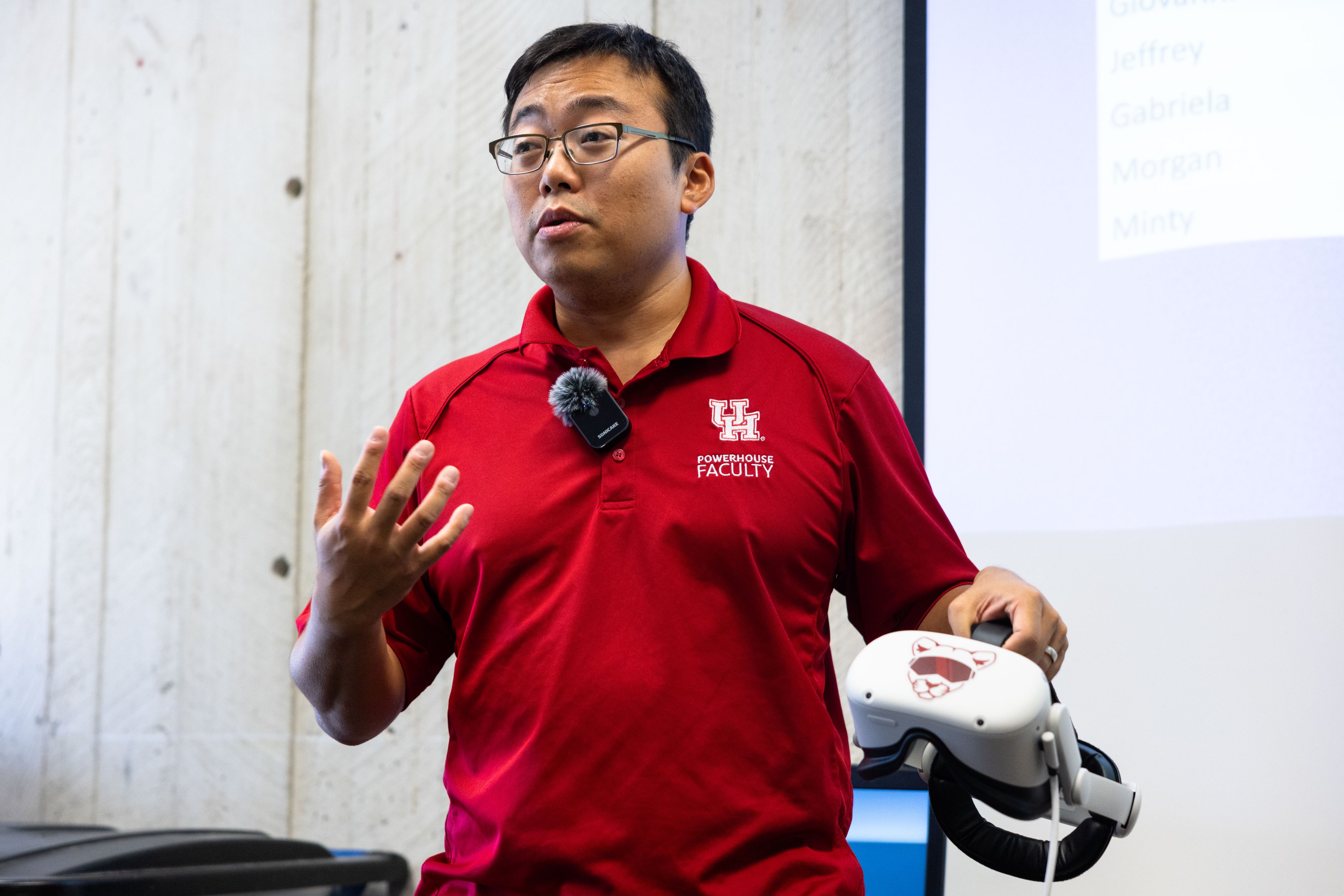
Tony Liao, director of CougAR Lab
Tony Liao, director of CougAR Lab
Supported by the Office of the Provost, Envisioning the Classroom of the Future provides both professors and students with new academic perspectives on a range of disciplines. The FED is also planning similar projects in physics, comparative cultural studies and art courses.
“Envisioning the Classroom of the Future addresses those technologies and processes that can be currently implemented but will also have an impact 10 years from now.” said Justin Burris, clinical associate professor in the College of Education. “This project is extending teaching and learning for both faculty and students.”
During a recent class meeting for CUIN 3111, students donned VR goggles and entered the virtual classrooms they designed. On hand for the demonstration was teaching fellow Kelly Davis, who introduced this project to the class. Tony Liao, associate professor in the UH Technology Division and director of the CougAR Lab, also was in attendance lending his expertise to support these projects. Also present were his CougAR Lab student team members— Rubayet Hridi, Julie Lai and Sammy Tawakkol— who are providing technical support for this project.
Envisioning the Classroom of the Future project was a natural for Liao and his team as the CougAR Lab applies AR and VR technologies to disciplines rooted in the social sciences.
For the CUIN 3111 project, Burris and education colleague Susie Gronseth, clinical professor, provided actual classroom measurements and layouts from the College of Education’s K-12 school partners. Students first completed two-dimensional (2D) models of classrooms using platforms such as PowerPoint, then translated these concepts into three-dimensional models using platforms similar to “The Sims” video game and completed a reflective assignment about using VR for teaching and learning. Tawakkol, a computer science doctoral student, created the 3D design and assisted in adapting CUIN 3111 students’ concepts into a VR model.
“Many times, professors use VR to lecture or take students to an exotic location. What we wanted to do with this project was help students with this ‘classroom design’ assignment and let them see it in a virtual reality setting,” Liao said. “It’s basically layered learning. Students first designed their classrooms in 2D then in 3D. Now, they’re seeing it in VR and can make comparisons or discover things they wanted to do differently.”
VR, said Liao, is helping future educators visualize their classrooms and make adjustments to designs and layouts before they begin their first day of school.
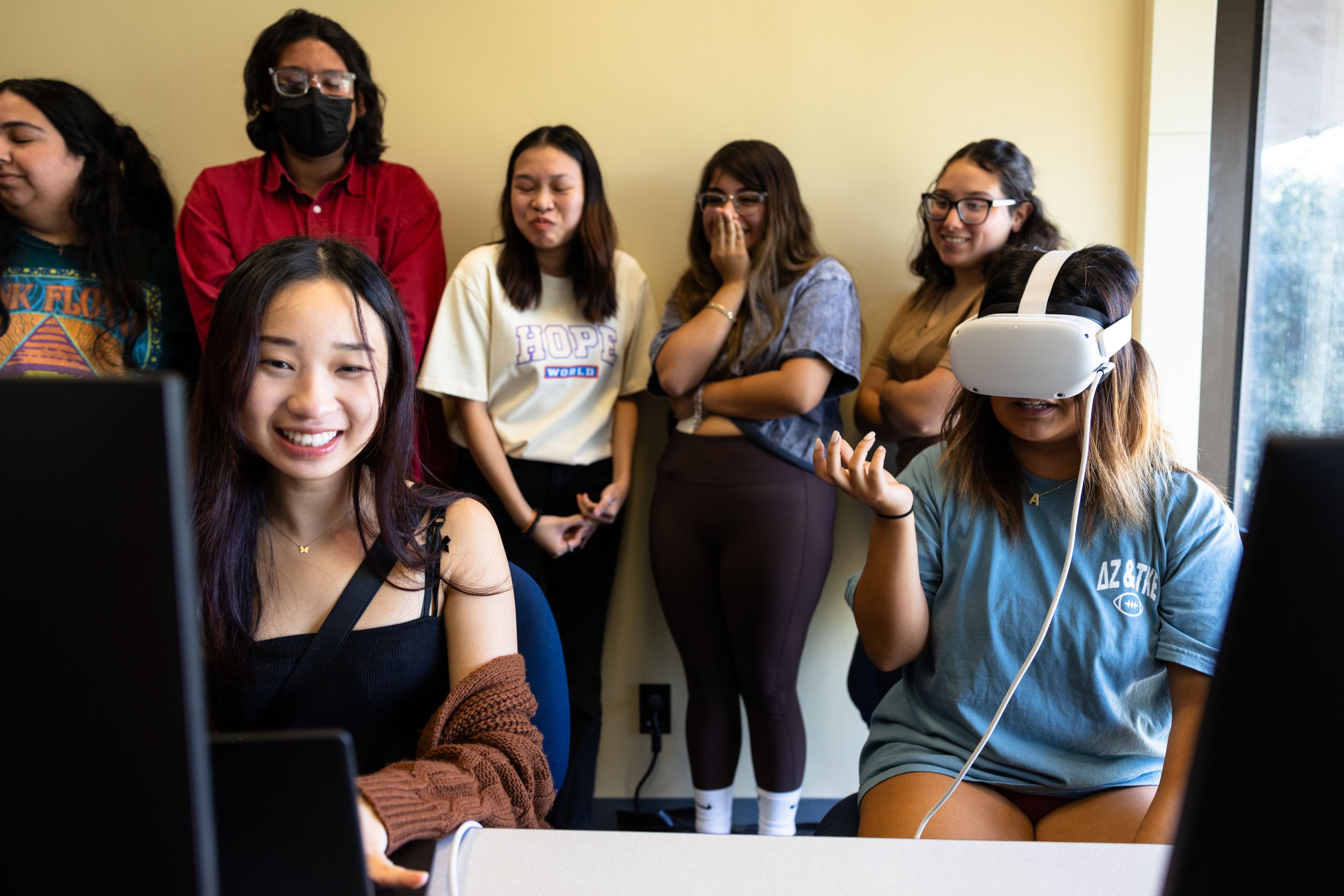
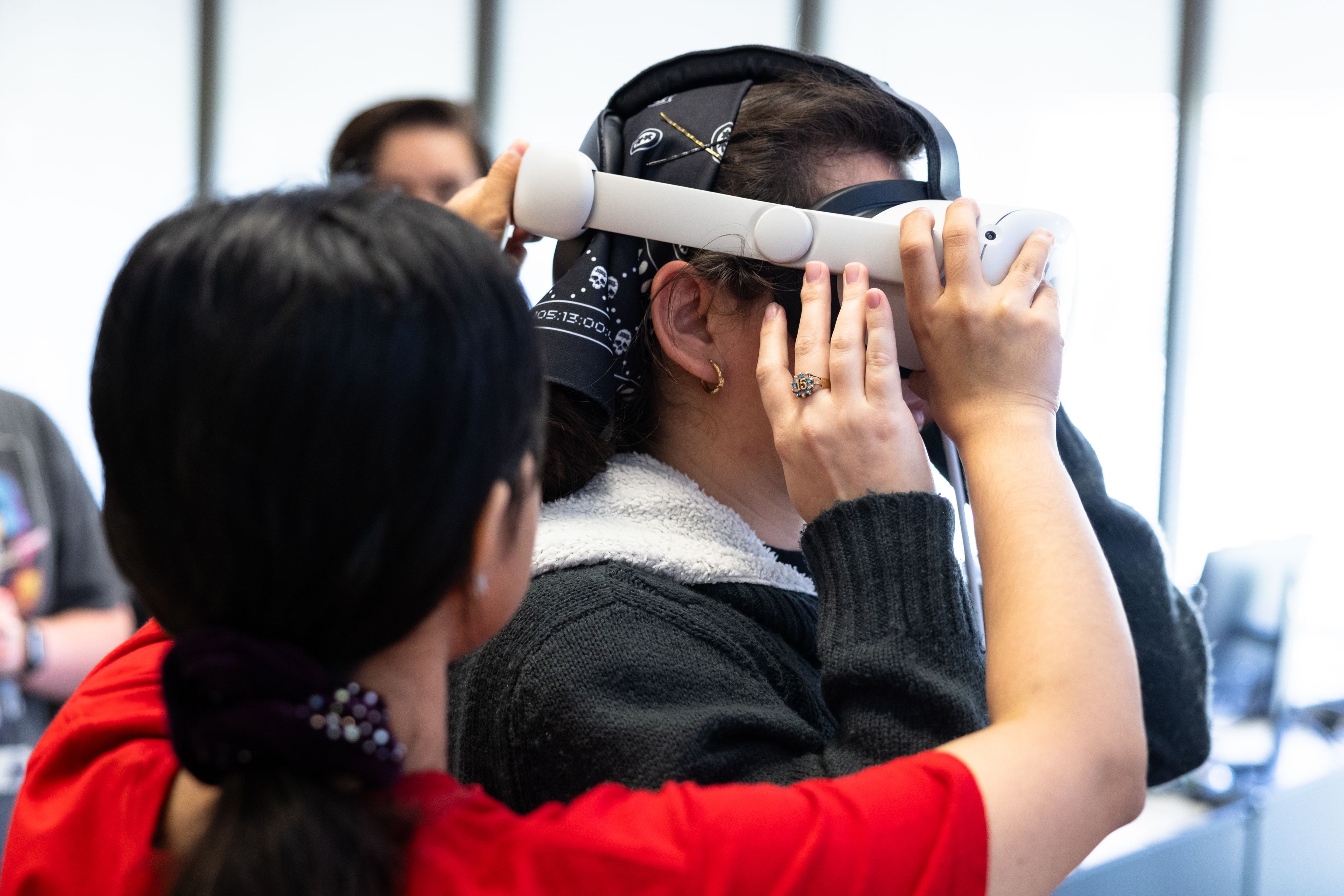
Among the CUIN 3111 students who viewed their VR classrooms for the first time was Nana Emery, who plans to teach K-3 students. She said that VR technologies will be very helpful for teachers and beneficial for their students.
“VR is very helpful because teachers can see what their classrooms will look like without going through the time and energy to move desks, tables and other furniture,” said Emery, an education major. “It also provides views from throughout the classroom, so teachers can see if perhaps students’ views might be obstructed.”
Classmate Sarah Rios agrees. She said that using technology to assist in the classroom design process helps future teachers recognize its impact on students.
“It really sets students up for success,” she said. “But it will help all of us as teachers. We can really connect with our students if the room is set up in a certain way. Those kinds of interactions can be very meaningful for young students.”
The Envisioning the Classroom of the Future initiative is part of the FED’s U-LeARning Lab, which provides opportunities for campus community members to sample AR and VR instruction. It is just one of the ways the FED is focused on enhancing the learning experiences of students and the instructional capabilities of faculty. Housed in UH’s Faculty Café, the FED hosts workshops and programming that supports both faculty excellence and student success.
Envisioning the Classroom of the Future courses were selected following the FED’s request for classes with unique projects that would accommodate AR and VR technology.
Other FED programs include a recent collaboration with the Association of College and University Educators (ACUE) to help faculty earn Certificates in Effective College Instruction.
In addition to ACUE certifications and Envisioning the Classroom of the Future, the FED offers programs aimed at bolstering scholarly output at UH, including workshops on writing, teaching, mentoring, and other topics.
“The FED is always looking at how to enrich teaching and learning,” said Leslie Coward, assistant director of Faculty Engagement and Development. “We’ve expanded our view to also look at technology and how it impacts classrooms and instruction. Envisioning the Classroom of the Future initiative focuses on all of these factors. As a result, both faculty and students are left energized and enthusiastic.”
